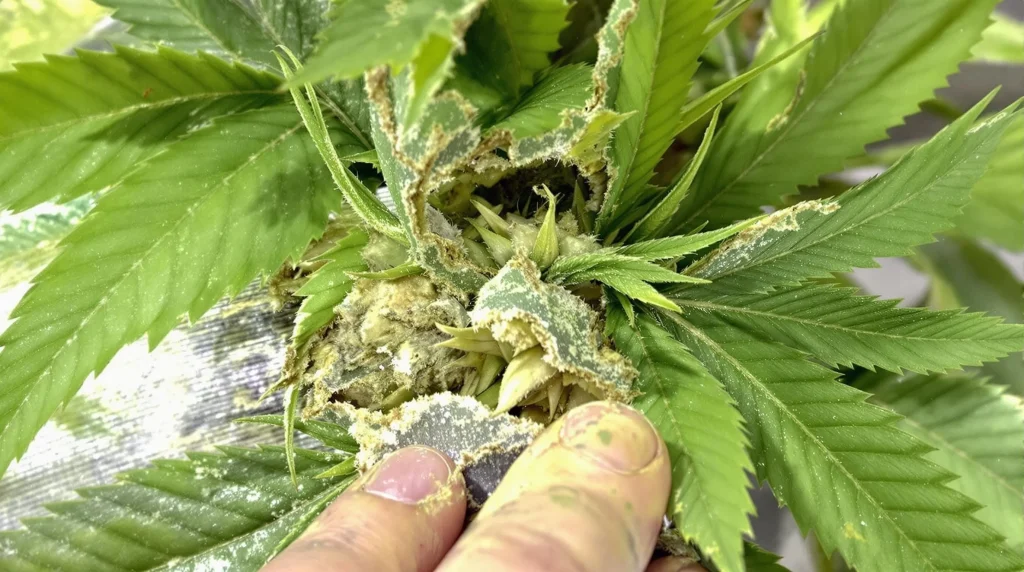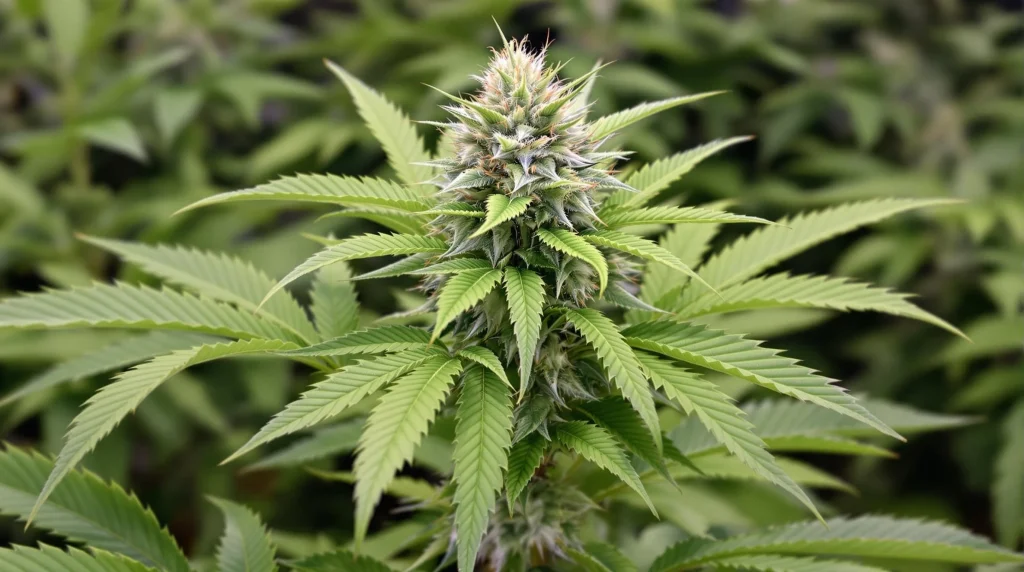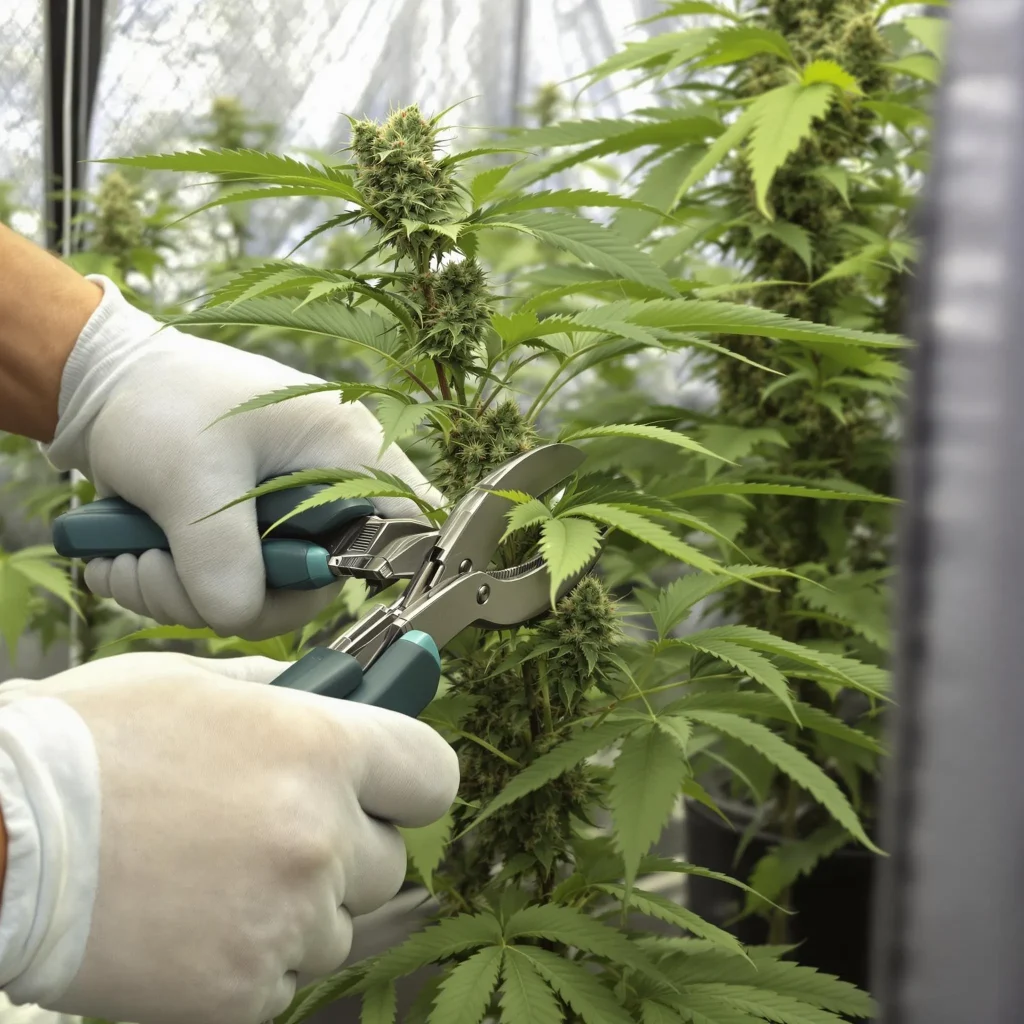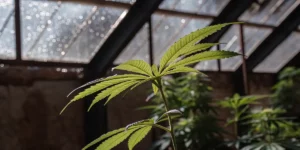When it comes to growing cannabis, timing and technique are everything. Many growers wonder, “Should I trim cannabis leaves during flowering?” The answer isn’t always straightforward, but getting it right can make the difference between a mediocre yield and a bountiful harvest. Let’s explore how and why trimming cannabis during flowering matters.
Why Consider Trimming Cannabis During Flowering?
Promoting Better Light Penetration
Cannabis leaves, especially fan leaves, can block light from reaching lower parts of the plant. This shading effect can hinder the development of lower buds, resulting in smaller, less potent flowers. Trimming some of these leaves during the flowering stage can open up the canopy, allowing light to penetrate deeper into the plant.
By improving light distribution, you give all parts of the plant a chance to thrive. This can lead to more uniform bud growth and maximize your yield. Additionally, light penetration can help stimulate photosynthesis in hidden parts of the plant, further enhancing overall health and vigor. Strategic trimming cannabis during flowering ensures optimal light access for healthier growth.
Improving Air Circulation
Dense foliage can trap humidity, creating an environment ripe for mold and pests. During the flowering stage, when buds are sticky and dense, airflow becomes even more critical. Trimming excess leaves can reduce humidity levels around the buds and decrease the risk of mold.
Better airflow also makes it harder for pests, such as spider mites, to establish themselves. A well-ventilated grow space is essential for healthy plants, especially during flowering. In addition, proper airflow reduces the likelihood of fungal diseases that thrive in stagnant, moist environments, protecting your harvest. Properly trimming cannabis during flowering minimizes these risks.
Redirecting Energy to Buds
Trimming can help redirect the plant’s energy from maintaining large fan leaves to developing bigger, denser buds. During flowering, the plant naturally focuses its energy on reproduction (producing buds), and strategic trimming can amplify this process.
By removing unnecessary leaves, you ensure that the plant’s resources are concentrated where they matter most, the buds. For detailed tips and techniques on how to trim cannabis during flowering for maximum yield, check out our comprehensive guide on trimming cannabis during flowering. This prioritization not only enhances bud density but also improves terpene production, resulting in more aromatic and flavorful flowers. Trimming cannabis during flowering directly impacts the quality and size of your buds.

When to Trim Cannabis During Flowering
Early Flowering Stage
During the first few weeks of flowering, plants experience a growth spurt known as the “stretch” phase. This is an ideal time to trim fan leaves that block light or crowd the canopy. Removing leaves early in flowering gives the plant time to recover before focusing entirely on bud development.
It’s important not to overdo it. Removing too many leaves during this phase can stress the plant, potentially slowing its growth. Instead, focus on selective trimming to balance light exposure and airflow while minimizing plant stress. Early trimming cannabis during flowering sets the stage for healthier plants.
Mid-Flowering Stage
By the middle of the flowering stage, the plant’s energy is directed almost entirely toward bud production. At this point, trimming should be minimal and focused only on leaves that obstruct light or airflow around the buds.
Avoid trimming large sections of the plant at this stage, as it can disrupt the plant’s natural processes and potentially reduce yield. A strategic approach, removing only what is necessary, helps maintain the plant’s momentum during this critical period. Properly timed trimming cannabis during flowering ensures consistent development.
Late Flowering Stage
In the final weeks before harvest, trimming should be avoided unless absolutely necessary. The plant is at its most delicate phase, and any stress could impact the final quality and quantity of your buds. Focus on maintaining an optimal environment rather than trimming.
Late-stage trimming risks damaging resinous buds and reducing terpene levels. Instead of trimming, ensure proper airflow and environmental controls to support the plant during its finishing phase. To preserve the quality of your harvested buds, consider using a curing jar for weed after trimming cannabis during flowering.
How to Trim Cannabis During Flowering
Step 1: Use the Right Tools
Invest in a pair of sharp, sterilized pruning shears or scissors. Clean tools minimize the risk of introducing pathogens to your plants. Avoid using dull tools, as they can damage the plant’s tissue and make it harder to heal.
Having a backup pair of shears ensures you can maintain efficiency, especially during larger grows. Sterilize tools between plants to prevent cross-contamination. Using proper tools is critical when trimming cannabis during flowering.
Step 2: Target the Right Leaves
Focus on removing large fan leaves that:
- Block light from reaching lower buds.
- Are yellowing or showing signs of disease.
- Crowd the canopy and restrict airflow.
Avoid trimming sugar leaves, as these smaller leaves near the buds contain valuable trichomes. These trichomes contribute significantly to the plant’s potency and flavor profile, making their preservation essential. Selectively trimming cannabis during flowering protects essential plant structures.
Step 3: Trim Gradually
Work slowly and assess the plant after each cut. Trimming too much at once can shock the plant and reduce its ability to recover. Gradual trimming allows you to monitor the plant’s response and adjust your approach as needed.
Take breaks to observe the plant from different angles, ensuring you maintain balance and symmetry in your trimming process. Gradual trimming cannabis during flowering minimizes plant stress.
Step 4: Dispose of Trimmed Leaves
Collected leaves should be removed from the grow area to prevent attracting pests or mold. Composting is an excellent option if you’re looking to recycle organic material.
For growers who prefer not to compost, consider using trimmed leaves for making extracts, such as cannabis butter or tinctures, to minimize waste. Efficient waste management is part of trimming cannabis during flowering.
Benefits of Trimming Cannabis During Flowering
Enhanced Bud Quality
Trimming cannabis during flowering improves light penetration and airflow, directly benefiting bud development. By removing unnecessary leaves, light reaches deeper into the canopy, promoting dense, resin-rich flowers. Adequate airflow reduces humidity, ensuring the buds remain healthy and free from mold, which can compromise quality.
Enhanced bud quality is also tied to improved trichome production. Trichomes are responsible for cannabinoids and terpenes, and their development is optimized when light and airflow conditions are ideal. Growers who trim strategically during flowering often report superior aroma, flavor, and potency in their final product.
Reduced Risk of Mold and Pests
Excess foliage creates humid microenvironments that attract mold and pests, especially during the flowering phase when buds become denser. Trimming excess leaves reduces this risk by improving ventilation, ensuring moisture doesn’t accumulate around sensitive areas like the bud sites.
Preventing mold and pests protects not only the current harvest but also the long-term health of your grow space. Spores from mold or eggs from pests can linger and affect future crops. Regular trimming during flowering keeps the environment inhospitable to harmful pathogens and pests, safeguarding your investment.
Increased Yield
Strategic trimming during flowering ensures the plant redirects its energy to bud production rather than maintaining unnecessary foliage. This reallocation of resources results in larger, more robust flowers that maximize the plant’s potential yield.
Increased yield isn’t limited to the primary colas. Trimming also benefits secondary bud sites, enabling smaller branches to contribute meaningfully to the harvest. By carefully removing non-essential leaves, growers can ensure the plant’s energy is efficiently used, resulting in an abundant and high-quality crop.
Potential Risks of Trimming During Flowering
Over-Trimming
Over-trimming is a common mistake that can stress the plant and reduce its ability to photosynthesize effectively. This stress can lead to stunted growth, delayed flowering, or reduced bud density. Striking the right balance is critical—removing too many leaves can do more harm than good.
Additionally, excessive trimming can disrupt the plant’s hormonal balance, particularly its auxins, which regulate growth and flowering. A measured approach, focusing on removing only the most obstructive leaves, is essential to avoid the pitfalls of over-trimming during flowering.
Timing Mistakes
The timing of trimming activities is crucial to avoid damaging the plant. Trimming too late in the flowering stage can harm the buds, reduce potency, or even introduce stress that affects the plant’s final yield. Most trimming should be done in the early to mid-flowering phase for best results.
Tracking plant development through a detailed grow journal helps growers pinpoint the optimal trimming window. This ensures trimming is conducted at the right time, minimizing risks and maximizing benefits.
Increased Recovery Time
Every cut made during trimming is a wound that the plant needs to heal. Excessive or poorly timed trimming can significantly increase recovery time, slowing down bud development and potentially reducing yields. Plants under stress may also become more vulnerable to other environmental factors, such as nutrient deficiencies or temperature changes.
Minimizing recovery time requires gradual and targeted trimming. Instead of removing large amounts of foliage all at once, growers should spread trimming sessions across multiple days to allow the plant to recover more effectively.
Alternatives to Trimming During Flowering
Low-Stress Training (LST)
Low-Stress Training is an effective alternative to trimming that involves gently bending and tying branches to improve light penetration and airflow. Unlike trimming, LST doesn’t involve removing any plant material, which minimizes stress while achieving similar results.
LST also helps shape the plant, creating an even canopy that optimizes the efficiency of grow lights. This method is especially beneficial for indoor growers aiming to maximize yields without the risks associated with trimming.
Defoliation
Defoliation is a less invasive approach than full trimming, focusing on the selective removal of a smaller number of leaves. This technique can be applied throughout the plant’s life cycle, making it a flexible alternative for growers who want to improve light and airflow without over-stressing the plant.
Selective defoliation is particularly effective in controlled environments where growers can carefully monitor and adjust humidity, temperature, and light intensity. By focusing on removing only obstructive leaves, defoliation complements trimming to maintain plant health and enhance bud quality.
Environmental Controls
Optimizing environmental conditions is another effective way to reduce the need for extensive trimming. Proper airflow, achieved through fans and exhaust systems, prevents stagnant air from accumulating around the plant. Similarly, maintaining optimal humidity levels ensures the plant thrives without unnecessary intervention. Learn how to fine-tune your environment using our Autoflower VPD Chart
Advanced growers can pair environmental controls with CO2 supplementation to further enhance plant growth and bud production. These measures not only support healthy plant development but also create a stable growing environment that minimizes the risks of mold, pests, and nutrient deficiencies.

FAQs About Trimming Cannabis During Flowering
Can trimming during flowering increase yield?
Yes, trimming during flowering can increase yield by improving light penetration and airflow. When unnecessary leaves are removed, light can reach lower branches and secondary bud sites, promoting uniform growth across the plant. Improved airflow also reduces the risk of mold and pests, ensuring the plant’s energy is focused on developing high-quality buds. However, it’s essential to trim strategically, as over-trimming can stress the plant and counteract these benefits.
How much should I trim during flowering?
Trim sparingly, focusing on removing large fan leaves that block light or hinder airflow. The goal is to improve the plant’s overall efficiency without causing undue stress. Typically, removing 10-20% of the plant’s foliage during a single trimming session is sufficient to achieve these goals without compromising its health.
Is it safe to trim in the late flowering stage?
Trimming in the late flowering stage should generally be avoided unless absolutely necessary. During this phase, the plant is highly focused on bud production, and any significant stress can disrupt its development. Trimming late in flowering can lead to reduced potency, delayed maturation, or even stunted bud growth.





